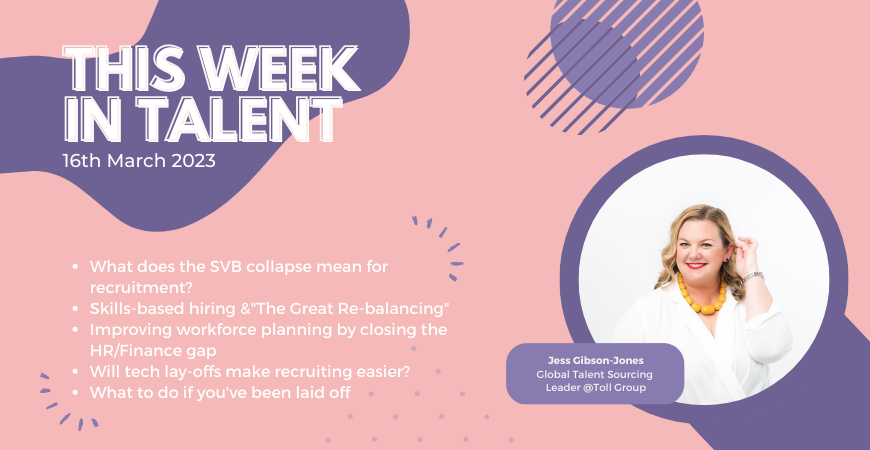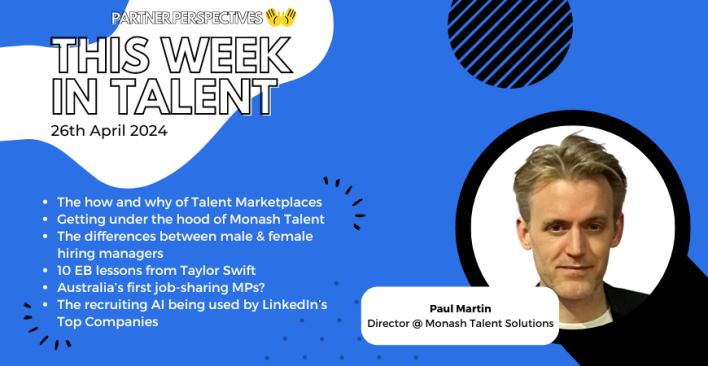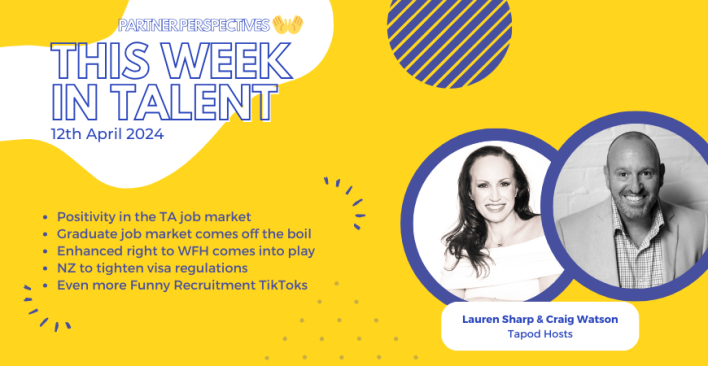This Week in Talent (16th March)

Hiya TA crew,
So, what’s been dominating the TWIT-iverse this week? Well only the collapse of Silicon Valley Bank (SVP) in a mere 48 hours and mention of more tech workforce reductions. (I promise it isn’t all doomsday!)
But on the collapse of SVB for a minute – not only is this triggering for those of us that still have memories of the GFC, but it has begged the question… how did they not know this was coming? Rising interest rates, mass cash withdrawals, fire-sale on bonds….panic.
Its interesting, I’ve written before blogs that I am somewhat of an economics nerd, and that certain market movements are pre-cursors to certain possible market scenarios, and that if we pay attention to those pre-cursors, we can somewhat immune proof ourselves during market volatility. So back to my original question… how did the execs at SVB not see this coming (if I were honest, Stevie Wonder could have seen this coming) and not adapted their strategies based on the market conditions. Sound familiar TA???
It also makes me think about the news we are seeing about additional reductions within the tech industry. Google, Salesforce, Meta, Atlassian, now possibly Meta again – its extremely sad to see this happening across the industry after all their hiring en-masse last year post pandemic with the term “the great re-balancing” being coined.
This begs the question – what happens now during the great re-balancing, and how do we get our internal TA teams through this? Now I could talk fervently for years on this subject, but instead I want to on two things: skills based hiring, and improved demand planning. Read on in my article selection to see how this relates.
If 2022 was about the “Great Resignation”, then 2023 will be about the “Great Re-Balancing”.
Also, make sure you register for the upcoming webinar next week, How recruiting automation is transforming hiring – for the better in uncertain economic times, with the teams from Paradox and Fonterra, to as they put it, leverage automation resulting in “responding to the right talent faster and gaining a competitive advantage.” GET IN ON THAT!
Here’s how the second-biggest bank collapse in U.S history happened in just 48 hours
It would have taken a $2.25B cash raise to avoid, but how did it happen? What role did VCs (venture capitalists) play? What markers did they miss? Could this have been avoided? What does it mean for the tech industry and the start-ups that had billions invested? AND…. what can TA learn from this?
What a skills-based hiring approach can mean for the “great re-balancing”
How can TA help their organisations ride out market instability? Hire for skill, rather than role and increase its ability to adapt, with the key being having a deep understanding of your organisation’s internal and external talent marketplace to know what skills it needs now, and in the future.
How? Start with a flexible, more agile job architecture.
“You’re losing talent when you only see people through the lens of the job they’re hired into.”
9 Trends That Will Shape Work in 2023 and Beyond
What should organisational leaders prioritise over the next 12 months? Here are the 9 Gartner research-based priorities including “quiet-hiring” and how this will manifest in terms of greater levels of internal mobility, hybrid flexibility and what this means in the post pandemic – WFH era, the “management sandwich”, how non-traditional candidates will expand talent pipelines, sustainable employee performance, a pushback to DEI momentum, managing employee data risks, transparency in recruiting tech amid AI bias concerns, and the erosion of organisation’s employee “social skills.”
Stepping Up Workforce Planning Strategy by Closing the HR-Finance Gap
Now I don’t personally think workforce planning should sit with HR, rather TA, but the point here is the develop integrated workforce planning across your organisation – with whatever teams necessary to help you in TA “see around corners” especially during market turbulent times and move way from reactive, job filled based recruitment into more proactive, strategic led talent advisory.
So where do you start? Well – workforce planning doesn’t need to be complicated – start with whatever data you have!
Tech Layoffs Should Make Tech Recruiting Easier. So Why Isn’t It?
As we start to see more and more talent from the tech space become available, it could be easy to assume the thinking that the war for tech talent might be easing…. Don’t be so sure.
“The general wisdom is that as people get laid off, they are eager to work for less to get back into the workforce. While that is often logical and reasonable, many employers aren’t seeing people willing to make sacrifices yet.”
Redesigning How We Work
Flexibility is still very much on the radar for our employees and candidates in the post-pandemic world (I’m going to start calling it BC “before-COVID” and PC “post-COVID” because I love a good acronym!), but in this awkward space we are in between the COVID-mandated work from home, and coming out of our cement bunkers and asking employees to return to the office – the question needs to be asked though “so…how do we work now?”
What to Do After Being Laid Off
Ok, so I absolutely hate this title…. BUT there are some awesome tips in here about once you have the dreaded notification you are one of the unlucky ones – what do you do next?
Tips such as to give yourself time to process and know its ok to feel exactly how you feel, look at your mindset, remember how awesome you are at what you do by reminding yourself about your achievements, get some clarity, and consider approaching job seeking like a job.
Remember – workforce reductions are not personal, and “this too shall pass”.
Related articles
Leave a Reply
Sign up to our newsletter
Get a weekly digest on the latest in Talent Acquisition.
Deliver this goodness to my inbox!


